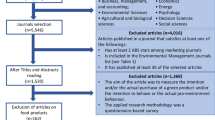Abstract
The literature on the use of environmental taxes inthe presence of distortionary (labor) taxes warns thata partial-equilibrium Pigouvian tax analysis is notappropriate because increasing the price of dirtygoods can futher aggravate the prexisting distortions. This argument is most frequently made assuming thatlabor is taxed to meet a fixed revenue requirement.When a dirty good is also taxed, others argue thatthis lowers workers' real wages, causing people toreduce their labor supply below its already suboptimallevel, aggravating labor market distortions. However,most papers ignore the effect that a cleanerenvironment can have on labor supply. That is, mostpast work has assumed that the quality of theenvironment is weakly separable in the utilityfunction. We argue that a cleaner environment canincrease labor supply, at least partially offsettingany incentive for workers to decrease their laborsupply. Further, we show explicitly how relaxing theseparability assumption affects the standardresults.
Similar content being viewed by others
References
Bovenberg, A. L. and R. A. De Mooij (1994), ‘Environmental Levies and Distortionary Taxation’, American Economic Review 84(4), 1085-1089.
Bovenberg, A. L. and L. H. Goulder (1996), ‘Optimal Environmental Taxation in the Presence of Other Taxes: General-Equilibrium Analyses’, American Economic Review 86(4), 985-1000.
Bovenberg, A. L. and F. van der Ploeg (1994), ‘Environmental Policy, Public Finance and the Labour Market in a Second-Best World’, Journal of Public Economics 55(3), 349-390.
Dockery, D. W., C. A. Pope, III, X. Xu, J. D. Spengler, J. H. Ware, M. E. Fay, B. G. Ferris, Jr. and F. E. Speizer (1993), ‘An Association Between Air Pollution and Mortality in Six U.S. Cities’, New England Journal of Medicine 329(24), 1753-1759.
EPA (1997), The Benefits and Costs of the Clean Air Act, 1970 to 1990 (Draft), Appendix D: Human Health and Welfare Effects of Criteria Pollutants. Washington: US Environmental Protection Agency.
Fairley, D. (1990), ‘The Relationship of Daily Mortality to Suspended Particulates in Santa Clara County, 1980–1986’, Environmental Health Perspectives 89, 159-168.
FitzRoy, F. (1996), Environmental Taxes, Non-Separable Externalititeis and Real Wages. Working Paper, University of St. Andrews.
Freeman, A. M., III (1993), The Measurement of Environmental and Resource Values. Washington: Resources for the Future.
Goulder, L. H., I. W. H. Parry and D. Burtraw (1996), Revenue-Raising vs. Other Approaches to Environmental Protection: The Critical Significance of Pre-Existing Tax Distortions, RFF Discussion Paper, Vol. 96-24. Washington: Resource for the Future.
Krupnick, A. J. and W. Harrington (1990), ‘Ambient Ozone and Acute Health Effects: Evidence from Daily Data’, Journal of Environmental Economics and Management 18, 1-18.
Maler, K.-G. (1974), Environmental Economics: A Theoretical Inquiry. Baltimore: Johns Hopkins University.
Ostro, B. (1994), Estimating the Health Effects of Air Pollutants: A Method with an Application to Jakarta, Rep. No. WPS1301. Washington: World Bank.
Ostro, B. D. (1983), ‘The Effects of Air Pollution on Work Loss and Morbidity’, Journal of Environmental Economics and Management 10, 371-382.
Parry, I. W. H. (1995), ‘Pollution Taxes and Revenue Recycling’, Journal of Environmental Economics and Management 29, S64-S77.
Pencavel, J. (1986), ‘Labor Supply of Men: A Survey’, in O. Ashenfelter and R. Layard, eds., Handbook of Labor Economics, Vol. 1. North Holland: Elsevier Science Publishing.
Pope, C. A., III, M. J. Thun, M. M. Namboodiri, D. W. Dockery, J. S. Evans, F. E. Speizer and C. W. Heath, Jr. (1995), ‘Particulate Air Pollution as a Predictor of Mortality in a Prospective Study of U.S. Adults’, American Journal of Respiratory and Critical Care Medicine 151, 669-674.
Portney, P. R. (1990), ‘Air Pollution Policy’, in P. R. Portney, ed., Public Policies for Environmental Protection. Washington: Resources for the Future.
Portney, P. R. and J. Mullahy (1986), ‘Urban Air Quality and Acute Respiratory Illness’, Journal of Urban Economics 20, 21-38.
Schöb, R. (1995), Ecological Tax Systems: Environmental Economics and Optimal Taxation. Frankfurt: Campus.
Starrett, D. A. (1988), Foundations of Public Economics. New York: Cambridge University Press.
Starrett, D. A. (1998), Double Dividend: Just Desserts or Pie in the Sky, Working Paper, Department of Economics, Stanford University.
World Health Organization (1996), Final Consultation on Updating and Revision of the Air Quality Guidelines for Europe, Rep. No. ICP EHH 018 VD96 2.11. Bilthoven, the Netherlands: WorldHealth Organization.
Zuidema, T. and A. Nentjes (1997), ‘Health Damage of Air Pollution: An Estimate of a Dose-Response Relationship for the Netherlands’, Environmental and Resource Economics 9, 291-308.
Author information
Authors and Affiliations
Rights and permissions
About this article
Cite this article
Schwartz, J., Repetto, R. Nonseparable Utility and the Double Dividend Debate: Reconsidering the Tax-Interaction Effect. Environmental and Resource Economics 15, 149–157 (2000). https://doi.org/10.1023/A:1008314717413
Issue Date:
DOI: https://doi.org/10.1023/A:1008314717413




